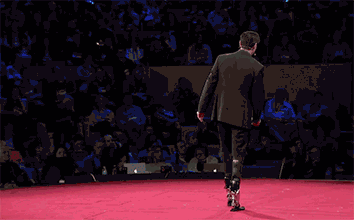
Bionics is defined as the application of biological methods and systems found in nature and design of engineering systems and modern technology, also known as bionical creative engineering. Present and future bionics aren’t the thing of science fiction; they are our current reality and are very much present in our everyday life. The current advancements are breathtaking and awe-inspiring, whether they’re helping people to hear for the first time or live their life independently with some ease.
Les Baugh, a double arm amputee, is currently part of a robotic prosthetic research program put on by John Hopkins. Baugh has been fitted with a vest, of sorts, that secures two robotic arms in place of his missing arms. The arms are controlled by thought and intention within the mind, muscle memory, and sensors. This is by far the most sophisticated prosthetic robotic application that I’ve seen to date. These robotic prosthetics are meant to become part of the wearer rather than the prosthetic wearing the person. With a massive amount of concentration and determination, Baugh is able to move objects, get a drink, and so much more. These simple movements were a thing of the past for him until recently and they have opened up a world of possibilities.
New Bionics aren’t a new idea, but we’re on the tangible forefront of this amazing reality. Hugh Herr is another inspiring example of the future of bionics. Herr, a well-known rock climber, lost his legs years ago to frostbite while on an expedition. Herr continued to climb after his accident with prosthetics he designed. After his climbing career ended, Herr focused on academia, and eventually landed at the MIT Media labs. After many long arduous years of research and testing, Herr created the BiOM ankle system to help him and others walk, run, and even dance. His story paves the way for so much more to come and is a historical landmark of our modern evolution.

Herr’s TED Talk delves deep into the science of biomechanics and how technology is the only thing limiting our future around disabilities and the human condition. He also describes how in the advancement of bionics we are sending a message that we are unbreakable as a society; that we can and will rebuild and advance. I can’t help but be ultimately moved by his talk over and over again.
With these two heartwarming and influential stories, it’s exciting to see what’s next in our medical and robotic future. Will the blind see? Will there be body modifications that make us super human? Only technology, a little imagination, and time will tell.
Find out more on new bionics: @TheNewBionics on Twitter. Also, “The Bionic Man” (featured in the “Robotica” series) is a stellar example of today’s bionics and what is to come in the future.
ADVERTISEMENT





